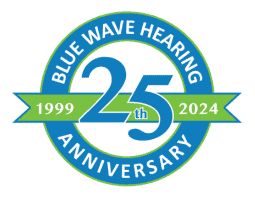- How Smoking Can Harm Your Ears - March 11, 2025
- Succeeding in the Workplace with Hearing Aids - February 10, 2025
- Welcoming the New Year with Better Hearing - January 2, 2025
Seeing your kids or grandkids enjoying their favorite new toy that you got them can be a very endearing experience, but one thing we don’t always think about is that some toys that make noise can be harmful to your child’s hearing.
If loud enough and played with at close proximity, loud toys can cause noise-induced hearing loss (NIHL). According to the American Speech-Language-Hearing Association, hearing is essential to speech and language development, communication, and learning.1
- It causes delay in the development of speech and language
- It reduces academic achievement
- Communication challenges can lead to social isolation and low self-esteem.
- Experience fewer incidents of depression
- It can influence career options
How Loud Is Too Loud?
An estimated 5 million kids have noise-induced hearing loss — and it’s entirely preventable.2
The irreversible damage done by loud noise is dependent upon the decibel level (the sound pressure) and the length of time ears are exposed. A sound at 85 decibels (dB) will take about eight consecutive hours to damage hearing, while 100 dB (the sound of a motorcycle, for example) can take only 15 minutes to cause damage. For every 3 dB increase in volume, the maximum exposure time is cut in half.
According to the Sight & Hearing Association, toys are required to meet the acoustic standard set by the American Society of Testing and Materials, which states that the sound-pressure level produced by toys shall not exceed 85 dB at 50 cm from the surface of the toy.
“What is troubling about this standard is that 50 cm is longer than the average arm length of an adult. We test toys based on how a child would play with a toy, not how an adult would play with it. If you watch a child playing with a noise-producing toy, you will see them hold it close to their face, next to their ears or closer than an arm’s length and the length of a child’s arm is approximately 10 inches (25 cm)”, explains Kathy Webb, Executive Director of SHA.
Here are the top four offenders on the SHA’s 18th Annual Noisy Toys List© from 2015:
- The Star Wars Yoda Jedi Talker
- The 4-foot-high Darth Vader Battle Buddy
- The Animal Babies Nursery, Jumpin’ Lil Monkeys (which peaked at 103.4 dB)
- At 100.4 dB, the Disney Frozen Cool Tunes Sing-Along Boombox
Loud toys destroy the fine hairs in the ear that are responsible for stimulating auditory nerve fibers. When these hairs are damaged, they’re damaged permanently. A byproduct of NIHL is usually high-frequency hearing loss. This means your little one may be unable to hear s, f, sh, ch, h, or soft c sounds. Hearing loss isn’t always sudden; it’s cumulative. So it’s best to start practicing healthy hearing habits now.
What to Look Out for When Buying Toys:
- Rattles and squeakers
- Musical toys
- Toy phones
- Toys made to amplify or change the child’s voice
- Toys that make firearm sounds
What You Can Do
Prevention is key in keeping your child’s hearing safe. Here are some tips and tricks we kicked up to help you and your child put your best feet forward.
- Test a toy before you buy it. Does it sound too loud for you? Then it’s too loud for your little one.
- If you find a toy you believe is too loud, call the Consumer Product Safety Commission at 800.638.2772 or the Sight & Hearing Association at 800.992.0424, or email them at ReportAToy@SightAndHearing.org.
- Put tape over a loud toy’s speaker.
- Look for toys with volume control.
- Create awareness — good hearing habits start at home during your child’s formative years.
Enable lifetime learning by identifying preventable loss of hearing in children. If you believe your little one is showing signs of hearing loss, don’t hesitate to contact us today. Hearing loss can be a difficult field to navigate, so we’ll make sure we’re right there with you every step of the way. We will be able to perform a hearing screening, determine if there is hearing loss, and explain to you the extent. As a family-centered practice, we encourage your entire family, as well as your pediatrician, to be involved in all aspects of this process.
1.http://www.asha.org/uploadedFiles/AIS-Hearing-Loss-Development-Effects.pdf
2.http://www.audiology.org/news/effort-aims-curb-number-kids-who-suffer-noise-induced-hearing-loss
3.http://chchearing.org/noise/children/noisy-toys/
4.http://www.sightandhearing.org/Services/NoisyToysList%C2%A9.aspx

